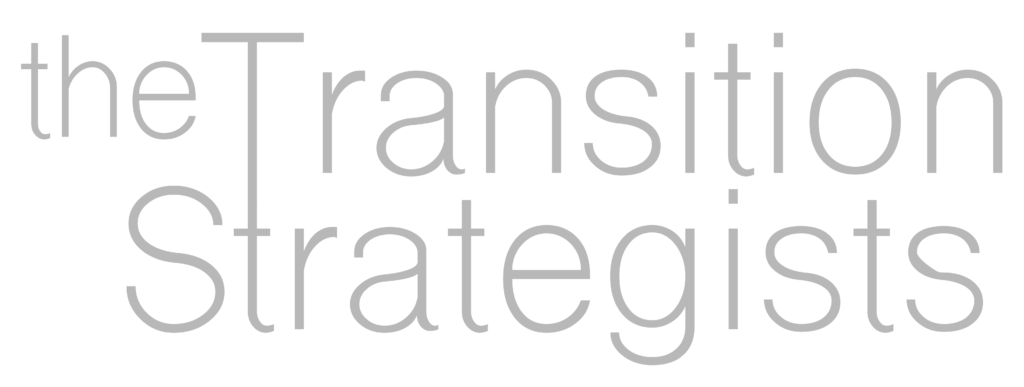Over the past 12 months, I’ve been working with the management team of a company whose newly designated successor / CEO died of COVID. While the death of a successor isn’t a typical transition obstacle, it, like many obstacles, can feel like a dead end. In this article we describe just one tool we use to help you overcome obstacles on your transition journey.
Three common transition-related obstacles are:
- A successor doesn’t accept an owner’s offer to become a successor
- A key employee quits when not chosen to be a successor
- The financial performance of the company changes radically (e.g., The Great Recession of 2008, or COVID-related closures of 2020 and 2021).
Making an offer successors can refuse
Most owners assume that the successors they choose will be thrilled to step into their shoes. They assume that a person would be “crazy” to pass on the “amazing” opportunity to take over their companies, and their transition plans hinge on the enthusiastic “yes!” from their chosen successor.
Well, prospective successors do decline offers of ownership for a variety of financial and personal reasons. For example, prospective successors, especially in intergenerational transfers, may accept an offer of ownership because they feel pressured or want to please family members. Some successors only discover that the role of CEO—one they thought would be perfect for them—is not at all right when they realize what’s involved in ownership.
Rather than base conversations on assumptions, we help owners “test the transition waters” with prospective successors using an “open, resourceful, and persistent” framework.
A key employee quits
Imagine that you have a longtime employee who is key to your company’s success, is capable of running your company and wants to do so. When you choose another person as your successor, will your longtime employee congratulate you or walk out the door? The loss of a key employee can do serious damage to a company and postpone a transition while owners right the ship. While we can’t prevent key employees from deciding to leave, we can help owners maximize the odds of retaining their relationships with important employees (always our goal) by engaging in open, resourceful, and persistent discussions that seek win-win outcomes (or solutions).
Financial headwinds
Among the goals owners set for their transitions are financial goals and often, meeting those goals depends on company performance. When an event (e.g., a serious disruption in the supply chain, high rate of inflation or a change in the value of the dollar), negatively affects financial performance, owners may have to adjust their transition plans. (Downturns in financial performance can be advantageous to owners in transition as we’ll discuss in a future article.)
When (not “if” since no transition is perfect) you encounter an obstacle on your transition journey, what strategy will you use to deal with the resulting uncertainty?
Dealing with Transition Uncertainty As You overcome obstacles on your transition journey
As a certified Leading Out of Drama® provider (Next-Element), I often use a four-phase approach to managing both uncertainty and conflict in transitions. We customize four steps to the specific situation and personalities of the individuals involved, but here’s a very brief, high-level summary.
Step 1: Stay Open. Seek to understand—with empathy and respect—the situation and what people are going through. That means acknowledging what is happening right now and that their dreams are not your dreams. If your company hits a rough patch before or during the transition, “staying open” means being appropriately transparent and considering both the role you play in a situation and what you can contribute to managing the event.
Step 2: Be Resourceful. When a successor backs out of a transition or a key employee leaves, it can be easy to become discouraged and stuck. Resourceful owners get curious. They look back at past successes to assess which strengths contributed to these successes and then leverage those strengths when facing the current obstacle. They engage in some creative problem solving and evaluate possible alternatives. The key to resourcefulness is flexibility because when individuals become rigid in their thinking, obstacles quickly become sinkholes.
Step 3: Be Persistent. Persistence is not doing the same thing over and over again and expecting different results. That’s insanity. Persistence involves identifying your deal breakers or values and objectives that are non-negotiable. You likely won’t have more than a few of these, but they are boundaries you will not cross.
Persistence also involves honoring your commitments rather than setting expectations of yourself or others that—especially when things are uncertain—you may not be able to fulfill. Once you’ve evaluated your alternatives and made your commitments, you can execute your plan.
Step 4: Stay Open. Once you’ve created and committed to a plan to deal with an obstacle, it’s time once again to check in with other stakeholders. With an open mind, you can present your plan and ask, “How does that sound?”
Overcome Obstacles on Your Transition Journey
We never promise owners that transitions will be obstacle- or conflict-free. We do, however, give you the tools you need to manage the obstacles you will encounter. To learn how this and other tools we use can help you overcome obstacles on your transition journey, give us a call.





